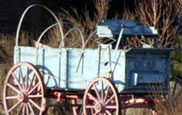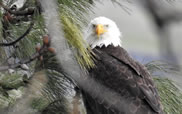
Explore Our Outdoor Classroom
Our field programs are outdoor-based and student-centered, following activity guides that align with Next Generation Science Standards (NGSS).
Each course takes place outside, utilizing the Discovery Center’s 52-acres of shrub-steppe and riparian ecosystem grounds as a classroom.
Each program engages students directly with nature to invoke curiosity, scientific questioning, and opportunities to connect their outdoor discoveries to the rest of their lives.
 Animal Tracks & Sign:
Animal Tracks & Sign:
Students develop ecological literacy through engagement with the signs animals leave behind as they go about their lives. Through targeted questions in the field, students awaken their imaginative ability to connect the animal signs they observe with the animal behaviors that caused them. Students increase their awareness, critical thinking, open-mindedness, and hypothesizing skills while learning about the natural history of animals in their surroundings. This activity can be paired with an indoor tracks and sign presentation lesson, if desired.
Bird Language Exploration:
 This focused exploration activity stimulates students’ awareness of their surroundings using multiple senses. Individually and as a group, students consider what information bird language can tell them about what is going on in the landscape around them and produce a collaborative map of the bird vocalizations and behaviors they observe.
This focused exploration activity stimulates students’ awareness of their surroundings using multiple senses. Individually and as a group, students consider what information bird language can tell them about what is going on in the landscape around them and produce a collaborative map of the bird vocalizations and behaviors they observe.
 Fire Ecology & Management:
Fire Ecology & Management:
Students consider the impacts of fires in different ecosystems of the Gorge, using the shrub-steppe system at Crate’s Point as the field example to discuss the merits and drawbacks of different fire management strategies. The activity helps students understand the complexity of natural resource issues and management considerations while developing critical thinking and discussion skills. This activity can be paired with an indoor fire ecology presentation to build a theoretical foundation for thinking about fire, if desired.
 “Forces of Nature” Landscape Ecology Map Activity:
“Forces of Nature” Landscape Ecology Map Activity:
This activity utilizes maps and diagrams to encourage students to consider the placement of the Columbia River Gorge landscape in the context of the forces that have shaped it over space and time. Students engage in peer-to-peer learning by breaking into groups to become “specialists” in a certain field by critically examining what story each map or diagram is telling. Each group then presents its findings to the larger group and collectively students construct the story of Columbia Gorge landscape ecology. In inclement weather, this activity can take place inside the River Gallery, using the large windows to connect maps with the outdoor landscape.
 Animal Habitats:
Animal Habitats:
In this interactive program, students first consider why habitat is important for wild animal survival and work together to define what habitat means. They then explore three distinct types of animal habitats in the Gorge and play a matching game to group similar habitats and pair wild animals with the habitat they are associated with. Wild animals are represented with photographs for older children, and with stuffed animals for smaller children. Students then take a short walk around the grounds to apply what they’ve learned to the habitat surrounding the Discovery Center.
